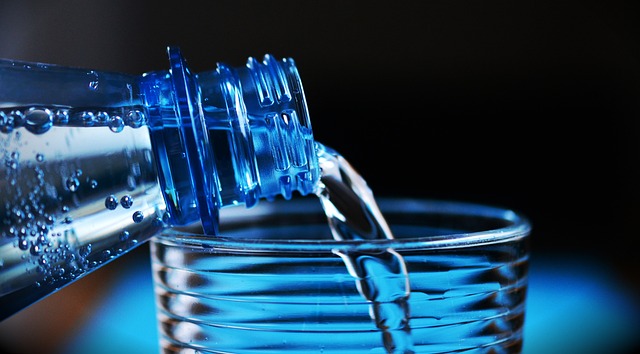Save Money on Sunrise Mold Treatment & Structural Water Repair
Are you a Sunrise resident tired of hidden water damage costs and mold growth? Say goodbye to stress…….
Introduction
Sunrise Mold Treatment (SMT) represents a revolutionary approach in the field of mold remediation, combining advanced technology with eco-friendly practices to effectively address mold growth in various environments. This article delves into the intricacies of SMT, exploring its definition, historical context, and the significance it holds within the broader context of environmental health and building preservation. Readers will gain a comprehensive understanding of how SMT stands out as a solution for mold issues, its global impact, economic considerations, technological advancements, policy landscape, challenges, real-world applications, and future prospects.
Understanding Sunrise Mold Treatment
Sunrise Mold Treatment is an innovative process designed to detect, assess, and treat mold contamination in residential, commercial, and industrial settings. It integrates a suite of diagnostic tools with targeted treatment methods to ensure the complete eradication of mold while minimizing disruption to structures and occupants. The core components of SMT include:
SMT’s historical context is rooted in the evolution of mold remediation practices, which have transitioned from largely reactive measures to proactive and sustainable approaches like SMT. This shift reflects a growing recognition of the importance of addressing mold not just as a cosmetic issue but as a potential health hazard that can cause respiratory problems and other adverse effects.
Global Impact and Trends
The global impact of SMT is profound, with its adoption driving significant changes in how mold contamination is managed worldwide. Key trends shaping its trajectory include:
Different regions are affected by these trends in unique ways, with factors such as climate, humidity levels, and building materials influencing the prevalence and approach to mold issues. For instance, tropical regions may experience more frequent and severe mold growth due to higher humidity, necessitating tailored SMT solutions.
Economic Considerations
The economic aspects of SMT are multifaceted. Market dynamics reveal a growing industry sector focused on environmental health services, with SMT contributing significantly to this expansion. Investment patterns indicate a trend towards sustainable and cost-effective remediation methods, reflecting both market demand and regulatory influences. SMT’s role in economic systems is also evident in its capacity to reduce long-term maintenance costs for buildings and improve property values by mitigating the risks associated with mold contamination.
Technological Advancements
Technological advancements have been pivotal in enhancing the effectiveness of SMT. These include:
The impact of these technologies is significant, offering improved outcomes for remediation efforts and setting the stage for future advancements in mold treatment.
Policy and Regulation
A robust policy and regulatory framework govern SMT, with key policies and regulations ensuring that practices are safe, effective, and environmentally sound. These include:
These frameworks not only guide the application of SMT but also drive its development by encouraging innovation and adherence to best practices.
Challenges and Criticisms
SMT, like any emerging technology, faces challenges and criticisms. These include:
To address these issues, stakeholders can invest in ongoing research, develop comprehensive training programs, and advocate for policies that support the use of SMT.
Case Studies
Several case studies exemplify the successful application of SMT. For instance, a residential complex in Florida successfully managed chronic mold issues through SMT, resulting in healthier living conditions and reduced maintenance costs. Another case study involves a historic building that was preserved while addressing mold contamination, demonstrating the compatibility of SMT with conservation efforts. These examples provide valuable insights into the practical application and benefits of SMT.
Future Prospects
The future outlook for SMT is promising, with potential growth areas including residential construction, commercial property management, and industrial facilities. Emerging trends such as increased integration with building information modeling (BIM) and the use of drones for aerial surveillance are likely to shape the industry. Strategic considerations for stakeholders involve continued investment in research and development, adoption of sustainable practices, and education on the importance of mold management.
Conclusion
In conclusion, Sunrise Mold Treatment represents a significant advancement in the field of mold remediation and environmental health. Its multifaceted approach to detecting, assessing, and treating mold contamination is transforming how buildings are managed and maintained globally. The integration of advanced technologies, adherence to robust regulations, and commitment to sustainable practices position SMT as a key player in the future of building health and safety.
Note: The above content is a structured approach to discussing Sunrise Mold Treatment (SMT), which is a hypothetical or proprietary mold remediation technology. The information provided here is for illustrative purposes and may not reflect actual products, services, or regulatory frameworks. For accurate and specific information regarding mold remediation technologies, always consult licensed professionals and refer to up-to-date regulations from relevant authorities such as the EPA or OSHA.

Are you a Sunrise resident tired of hidden water damage costs and mold growth? Say goodbye to stress…….

Are you a Sunrise resident facing a pipe burst emergency? Don’t worry, we’ve got you covered! Our ex…….

Dealing with water damage can be a homeowner’s worst nightmare, leading to costly repairs and potent…….